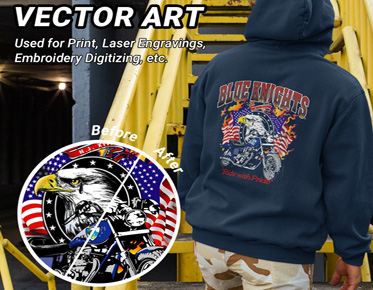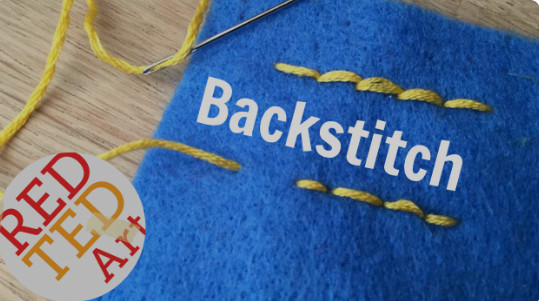The Art of Screen Printing: Maximizing Quality with Vector Art
In the world of visual communication, screen printing stands as a venerable art form, marrying traditional craftsmanship with modern technology to produce striking designs on various substrates. Whether it's apparel, posters, or promotional materials, screen printing offers unparalleled versatility and impact. At the heart of this process lies the quality of the artwork used, and in recent years, the integration of vector art has revolutionized the industry. In this article, we'll delve into the intricacies of screen printing and explore how vector art serves as the linchpin for maximizing quality in this dynamic field.
Screen printing, also known as silk screening, is a printing technique that dates back centuries. It involves using a mesh screen to transfer ink onto a substrate, creating vibrant and durable prints. Each color in the design requires a separate screen, allowing for complex and multi-layered imagery.
Importance
of Quality Artwork
In the realm of screen printing, the adage "garbage in, garbage out" rings especially true. The success of a screen printing project hinges on the quality of the artwork used as the basis for creating screens. While skilled printers can work wonders with subpar artwork, starting with high-quality, well-prepared artwork ensures optimal results and minimizes headaches down the line.
What is
Vector Art?
At its core, vector art is a digital format composed of mathematical equations that define shapes and lines. Unlike raster images, which are made up of pixels, vector graphics are resolution-independent, allowing for infinite scalability without loss of quality.
Advantages
of Vector Art for Screen Printing
Scalability: Vector graphics can
be scaled up or down infinitely without any loss of clarity or sharpness. This
makes them ideal for screen printing projects of
all sizes, from tiny logos to large banners.
Precision and Detail: Because
vector graphics are composed of clean, crisp lines and shapes, they lend
themselves well to intricate designs and fine details. This precision ensures
that every element of the design is reproduced accurately on the printed
substrate.
Color Consistency: Vector files
maintain color integrity regardless of size or output device. This means that
colors remain true to the original design throughout the printing process,
resulting in consistent and reliable prints.
Editing Flexibility: One of the most significant advantages of vector art is its inherent editability. Designers can easily adjust shapes, colors, and sizes without compromising quality, allowing for endless experimentation and refinement.
Choosing
the Right Software
Selecting the appropriate software is the first step in creating vector artwork for screen printing. Industry-standard programs like Adobe Illustrator, CorelDRAW, and Inkscape offer robust toolsets tailored to the needs of screen printers.
Designing
with Layers and Paths
Organizing artwork into layers and utilizing vector paths are essential techniques for creating complex compositions. Layers allow for easy organization and editing of elements, while paths define the shapes and lines that make up the design.
Utilizing
Vector Tools and Techniques
Mastering vector tools such as the Pen Tool, Shape Builder, and Pathfinder empowers designers to create intricate artwork with precision and efficiency. These tools allow for the creation of complex shapes, precise curves, and seamless transitions, resulting in professional-quality designs.
Importance
of High Resolution
When vectorizing raster images, starting with high-resolution source files is crucial. High-resolution images retain more detail and allow for cleaner, more accurate vectorization.
Tracing
Techniques
Vectorizing raster images involves tracing the outlines of shapes and lines to create vector paths. This can be done manually using the Pen Tool or automatically using tracing software. Manual tracing offers greater control and precision, while automated tracing is faster but may require more cleanup.
Fine-Tuning
and Adjustments
After vectorization, fine-tuning and adjustments are often necessary to refine the vector artwork further. This may involve tweaking anchor points, adjusting curves, and optimizing shapes to achieve the desired result.
Understanding
Color Separation
Color separation is the process of dividing a design into individual color components, each of which will be printed separately onto the substrate. Each color requires its own screen and ink, making color separation a critical step in the screenprinting process.
Tools
and Software for Color Separation
Specialized software tools like Adobe Photoshop and AccuRIP streamline the color separation process by automatically generating separate channels for each color in the design. These tools analyze the colors in the artwork and create separate files or screens for each color, simplifying the printing process.
Tips
for Effective Color Separation
Effective color separation requires careful consideration of factors such as ink densities, screen meshes, and printing order. Adjusting these variables can help ensure accurate color reproduction and registration during the printing process, resulting in vibrant and cohesive prints.
Preparing
Screens
The screen preparation process involves coating screens with photosensitive emulsion and exposing them to UV light to create stencil-like images. Each screen corresponds to a single color in the design and is essential for transferring ink onto the substrate during printing.
Setting
Up the Printing Press
Once the screens are prepared, they are mounted onto the printing press, aligned accurately, and adjusted for ink viscosity and pressure. Proper setup of the printing press is critical for achieving consistent and high-quality prints.
Ink
Mixing and Preparation
Custom ink colors are mixed according to the specifications of the design and loaded into the printing press. Conducting test prints helps ensure optimal ink consistency and color accuracy before full-scale production begins.
File
Preparation for Screen Exposure
Vector artwork is converted into film positives and exposed onto the screens using UV light. This transfers the design onto the screen mesh, creating the stencil images necessary for printing.
Transferring
Vector Art to Screens
After exposure, screens are washed out to reveal the stencil images and dried thoroughly before printing. This process removes unexposed emulsions and prepares the screens for ink application.
Ensuring
Registration Accuracy
Proper registration is essential for ensuring that each color in the design aligns correctly during printing. Accurate registration minimizes misregistration and ensures that the final prints are crisp and consistent.
Ink
Application Methods
Various ink application methods, such as flood coating, stroke printing, and halftone printing, offer different textures and effects in the final print. Choosing the right technique depends on the desired result and the characteristics of the artwork.
Troubleshooting
Common Printing Issues
Addressing issues like ink bleeding, ghosting, and uneven coverage requires adjustments to ink viscosity, screen tension, and printing speed. Troubleshooting printing issues promptly ensures consistent and high-quality results.
Achieving
Consistent Results
Regular maintenance of printing equipment, monitoring of environmental conditions, and adherence to standardized procedures contribute to achieving consistent and repeatable results in screen printing. Consistency is key to establishing a reputation for quality and reliability in the industry.
Heat
Setting the Ink
After printing, substrates are heat set using heat presses or conveyor dryers to cure the ink and lock in the pigments. Proper curing ensures durability and wash fastness, resulting in long-lasting prints.
Post-Printing
Inspection and Touch-Up
Inspecting prints for imperfections and performing touch-up corrections ensures that the final prints meet quality standards. Spot-cleaning techniques can address minor flaws and enhance the appearance of the prints before they are shipped to customers.
Quality
Control Measures
Implementing rigorous quality control measures throughout the printing process, including visual inspections, color matching, and wash testing, helps verify print quality and customer satisfaction. Quality control is essential for maintaining high standards and building trust with clients.
In conclusion, the integration of vector art
has revolutionized the world of screen printing, offering unparalleled
precision, scalability, and color consistency. By harnessing the power of vector graphics in the design and production process,
screen printers can maximize print quality, achieve stunning results, and
elevate their craft to new heights of artistry and innovation. With careful
attention to detail and a commitment to excellence, screen printers can create
prints that captivate and inspire, leaving a lasting impression on viewers and
clients alike.



